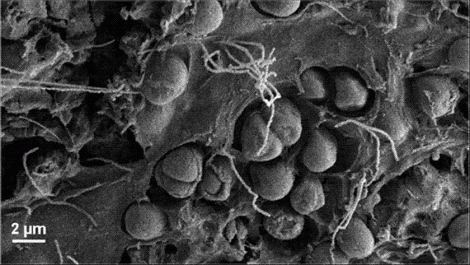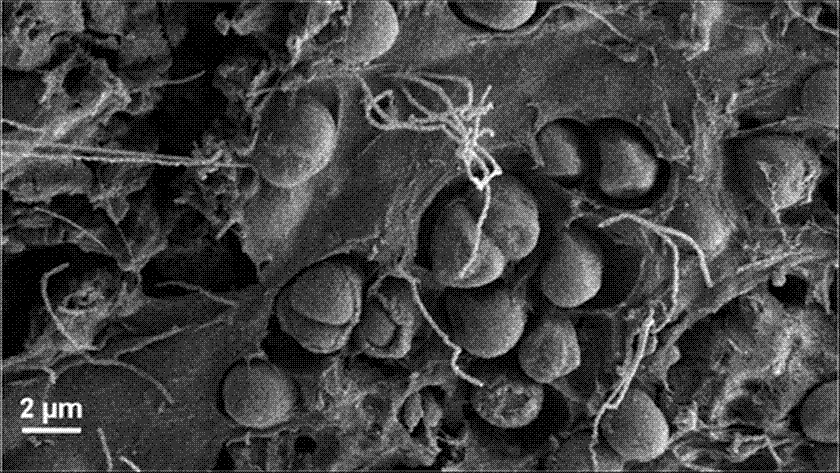
Environmental Science and TechnologyYum, plastic.
We already knew that barnacles, lanternfish, and whales have been gobbling up plastic. It turns out that the problem is even bigger than we thought — because it is much, much smaller. Welcome to the “plastisphere,” the tiny plastic-based ecosystem developing within the world’s oceans.
The alien-sounding title is fitting, as scientists have found more than 1,000 species of microbes living there, some of which still have not been identified. The group of organisms supported by the plastic was significantly different from, and much more diverse than, other microbial communities in the ocean, suggesting that the plastic particles are providing a haven for microbes that otherwise might not survive, or even arise in the first place.
The study, done by a team in Woods Hole, Mass., took a high-resolution look at plastic particles between 1 and 5 millimeters in size (I believe the unscientific term is “itty bitty specks”). The critters camped out on them are even tinier, but taken together act as a full-blown ecosystem, not unlike a coral reef. Plant-like microbes cluster at the giving end of the food chain while other, animal-like microbes feed on them, and on each other. There are even decomposers and a few synergistic microbes getting along like Disney woodland creatures.
How big a deal is it to discover a new ecosystem developing in the middle of an old one? (An old one which supports about a billion people, that is.) The answer is that no one knows quite yet. Still, it is pretty likely that this new microbial cocktail (yum!) will alter the ocean ecosystem in some larger way.
One very interesting but very hypothetical possibility proposed by the Woods Hole team is that some of these microbes may actually be cleaning up the plastic for us, since they were found hunkered down in ‘pits’ on the surface of the plastic particles. If these microbes can degrade petroleum-based materials, that could be an explanation for why the level of plastic debris in the ocean has appeared relatively stable for the last 22 years.
Gee, wouldn’t it be great if the alien lifeforms of the plastisphere could just go all-you-can eat on the mess we have made? Unfortunately, the plastic raft of microbes also could also potentially serve as a vector for harmful pathogens, since plastic can travel much farther on ocean currents than other materials. Researchers found one genus of bacteria called Vibrio, a few species of which are associated with fun gastrointestinal diseases like cholera, which normally cannot survive in the open ocean. I guess we’ll have to wait to see if the plastisphere ends up being more like Alien or Wall-E.



